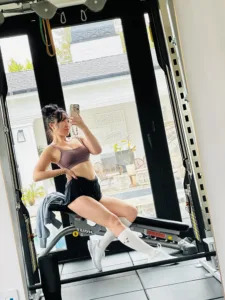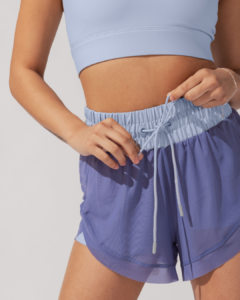Cassey Ho's Blog, page 30
March 22, 2023
Are You Ready To Meet The Perfect Running Shorts?!
Hey guys!
Ok I’m trying this running short thing again. The first few times I wasn’t quite there but guys, I think THIS is it! Meet the Cadence Run Shorts.
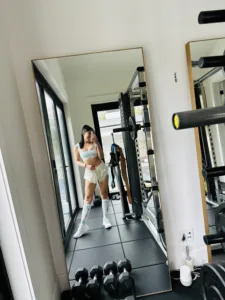
It’s giving sporty. It’s giving elegance. It’s giving…I need to make these in more colors.
My Problem With Running ShortsI love running shorts bc they’re flowy and usually comfy, but there are some problems:
inner panties give me inner thigh rashes (ugh, the worst!)
restrictive fabric is too tight for plies too open so it’s flash city, USA
too open so it’s flash city, USA
Cadence Run Short FeaturesView this post on Instagram
A post shared by Cassey Ho (@blogilates)
Soooo here’s what’s cool about the new POPFLEX Cadence Run Short .
.
Built-in shorts so you can kick as high as you want without worrying!
Stretchy, breathable outer mesh for extra coverage (squat proof) plus it’s so elegant
upside down tulip  cut on outer short for ultimate plié-ability and no restriction
cut on outer short for ultimate plié-ability and no restriction
2 modes: high waist or low waist (just roll it over!) light heart booty bc it’s cute
light heart booty bc it’s cute 
I’ve been wearing these on repeat. They are literally the perf outfit for my WFH’ing treadmill walks and morning gym sessions.
These shorts comes in sizes XS – 3X! And as a reference I’m wearing a size S! I’m wearing my normal size here BUT if you want more of a flowy fit and more room to do the rollover waistband, I’d recommend sizing up!
Whether your cardio of the day involves running or running errands, level up your strides with these ultra-flowy, flattering + lightweight run shorts. My favorite feature? The high-adjustable waistband is designed to support your body’s movement.
Tell me in the comments… what color is your fave?!

p.s. to any of you who are XXS, I am working on making extended sizing for these!! The truth is I’ve actually been designing these shorts for over 2 years (they had to be perfect!!), so they started before we offered XXS in the POPFLEX size range.
Is Gen Z Disrupting Beauty Standards and Fashion?
If the thought of bell bottom jeans and ballet flats making a fashion return stresses you out, chances are you’re a millennial.
Jokes aside, the demographic cohort born between 1997 and 2012, are known as Generation Z (or Gen Z), and they are taking the fashion and beauty industry by storm. They have already made a significant impact on the industry by breaking down the conventional norms of fashion and beauty standards, and creating a new era of individualism and inclusivity. Here’s what that means.

Image: Charli Damelio
Millennials built a highlight reelIn a now viral TikTok, London-based sociologist and content creator Rukiat Ashawe dug deeper into the ways in which Gen Z is transforming how fashion and beauty is perceived (and sold) to mass audiences.
@iamrukiat I came out of my break to share my thoughts on the generational shift between gen z and millennials! It’s currently gen z’s world and we’re just living in it.. and I love that. I love how they have established their own identity and are the current taste makers and trendsetters when it comes to youth culture. Brands and companies also target gen z now because of how influential and important they have become. Millennials now assimilate to them rather than the other way round. I’m still on my break btw, just tryna get through final year! Will be properly back when in done! #fyp #foryoupage #genz #millennialsoftiktok #millennialsvsgenz #millennialpause #genzshake #y2kfashion #blackwomen #fashiontiktok #popculture #tumblr2014 #kyliejenner #kyliecosmetics #kimkardashian #cleangirlaesthetic #trendanalysis #sociology ♬ Lo-Fi analog beat – Gloveity
According to Ashawe, social media first exploded in the early 2010s, attracting a large volume of millennial users who created “formal” content.
These videos and photos (often shot by professional cameras) only portrayed the highlight reels of their best moments or photos. In other words, this was the era where cosmetic surgery, including lip fillers and brazilian butt lifts, glam makeup, facetune filters and a general “perfection” aesthetic thrived.
Millennials emphasized creating a sense of jealousy from their following, while still maintaining a professional sense, in the event that prospective employers found their profiles. For them, the way they presented themselves had to conform to a certain societal standard.
@lorenrosko GUILTY but learning#millenial #outofstyle ♬ original sound – Loren Schaffer Rosko
Gen Z is about “curated imperfection”
As someone who works in advertising and marketing, Ashawe personally witnessed how advertisers look at sales through the gaze of youth culture and cultural shifts on the Internet. Additionally, as someone who has always been active online, she understands how social media has forced the evolution of the beauty and fashion spaces, and will continue to do so.
For instance, unlike millennials, Gen Z rejects this level of curation in a rebellious manner.Instead, they are creating a separate identity, which is now influencing what is trendy and what is not.
Welcome the era of “clean girl” aesthetic, photo dumps, blurry photos and TikTok videos where the creator is not afraid to film without a full face of makeup or with messy hair and clothes.
“Millennials are all about curated perfection, whereas Gen Z are about curated imperfection. Millennials had their time to dictate what’s “cool” and what’s not, and now it’s Gen Z’s turn. Even brands and advertising are marketing the preferences of Gen Z. It’s a cycle,” she tells Blogilates.

Image: Emma Chamberlain
The first generation not motivated by consumerismGen Z is all about authenticity, individuality, and inclusivity, and they are more interested in celebrating imperfections than meeting impossible standards. This has impacted the way social media tools are being used and brands are increasingly paying attention. In fact, brands are no longer concerned about what millennials prefer or endorse, but instead are focusing their marketing energy when it comes to beauty and fashion brands towards the likes and dislikes of Gen Z.
“Gen Z is disrupting the fashion and beauty standards in all ways, but they are one of the first generations that are not motivated by pure consumerism. Gen Z is a different type of consumer and they are really pushing into self presentation and a level of realness that is unseen before,” explains Deirdre Clemente, cultural historian and Director of Public History at University of Nevada Las Vegas.
Tiktok broadcasts the generational shift in beauty standards in real timeHistorically speaking, this pattern of invention and reinvention is common. Clemente agrees that Ashawe’s TikTok video accurately portrays the cyclical nature of changing fashion and beauty standards and how it’s Gen Z’s time to disrupt these trends.
According to Clemente, cohorts of generations look at those before them to forge their own identities and to either modify, or add onto, what comes before them; similarly, Gen Z has reacted to what millennials have done and as a result, they reject what millennials found “sexy” or “beauty” and are forcing how social media is being used.
“For instance, millennials love the pouty face filter. Gen Z doesn’t use this filter and I view this rejection of millennial makeup as typical of social change, but also symbolic of how Gen Z define consumerism on their own terms because their consumption is based on the types of companies they support, that do or do not support their political or social views,” Clemente adds.
@nogood.io OUT: polished feedsIN: authenticity
#genz #genzvsmillenial #genzemployee #genzoffice #millennial #digitalmarketing #socialmediamarketing #creators #influencers ♬ Boy’s a liar Pt. 2 – PinkPantheress & Ice Spice
Brands need to keep up with shifting trends
Through the power of social media, it is becoming incredibly obvious that Gen Z are using Instagram and TikTok to their advantage and become trendsetters in their own right. This means that brands need to catch up on the ways Gen Z demands authenticity and transparency and to also value sustainability.
This awareness is especially significant and likely to shape the industry for years to come. If brands want to appeal to Gen Z, they need to be willing to adapt and to prioritize the values that are important to this generation, and not millennials or any generations below them.
For instance, Gen Z are renting other people’s clothes or putting their own up on rental platforms and even upcycling hand me downs and thrifted items. Some examples include the ways in which they are taking a break from popularized fast fashion brands, and instead digging into their closets to transform old pieces into newer items they can wear. Best part? They’re recording all of these changes and tagging them as “fit the flip” or “upcycling.”
Don’t worry, MillennialsMillennials everywhere may feel concerned that what they once deemed cool or interesting may not be the case for longer. As someone who falls within this age range, I often feel a disconnect when speaking to family members or mentees that are Gen Z and find an inability to find mutual grounding in the ways we dress, speak, or think.
However, despite these differences, millennials don’t need to be worried by the changing beauty and fashion standards. Just like the Generation X above millennials conformed to the changes millennials influenced, the current changes that the newer generation are making should inspire millennials to catch up and be aware of what’s happening around them.
Though the future is still to be seen, both Clemente and Ashwate predict that the next buzzing trends will largely follow the cycle of invention and reinvention that has been previously seen. However, this time around, it will be Gen Z spearheading the change.
March 20, 2023
An Expert Breakdown on Hormones and Acne
Thanks to my obsession with teen magazines in my youth (Hi Sassy and YM!), the early catalysts to my eventual career in journalism, I learned about the importance of skincare at 16: never leave the house without an SPF, never sleep with makeup on, and stay far away from tanning beds.
What these magazines did not prep me for, and I had to learn on my own, was that as you age, your skin will go through some radical hormonal changes—and you can definitely thank your menstrual cycle for that. (In the last 10 years or so, every week my own skin is one of the following: oily, dry, extra sensitive, or full-on acne-prone. Rinse, repeat. What’s going on?!)

Here’s a professional breakdown on hormones and acne. We’ll talk about how our skin changes throughout our menstrual cycle, and as we age gradually towards menopause. (!!!) Buckle up, it’s a wild ride—but a skincare journey you can handle if you’ve got a fantastic dermatologist and esthetician to guide you.
Hormones acne
acneIn the days leading up to our period, and while actually on it, how can we best care for our skin? According to Rochester, New York-based dermatologist Dr. Allison Holm, your premenstrual flare-ups are thanks to your hormonal fluctuations.
“The hormonal changes can lead to more sebum (oil) production which tends to cause flares in acne.”
Steps that can be taken to calm your skin down include using daily acne treatment to keep acne under control (“not just treating when it flares” clarifies Dr. Holm), and using both over the counter and prescription products—this is when you should probably see a derm.
“Good over-the-counter treatments include benzoyl peroxide (both lotions and cleansers), topical retinoids—such as Differin and prescription tretinoin–and on the spot treatments such as pimple patches like Dalmation, which can speed up a pimple to resolve much more quickly,” says Dr. Holm. “Another approach is to treat hormonally using oral birth control pills and/or hormonal therapy such as Spironolactone.”
@teawithmd #hormonalacne is one of the conditions that I really like treating because we have a lot of tools at our disposal to help patients. #spironolactone is a gamechanger #acne #acnetreatment #acneskin #acnescars #acnetips #dermbypark #greenscreen ♬ original sound – Dr. Joyce Dermatologist
How to manage acne on your period
If you tend to break out around your period, nutrition and hydration could help tame your skin.
Fill your water bottleAccording to skincare expert and registered nurse practitioner Kris Adair, co-owner of Adair MedSpa, there’s a connection between hydration and breakouts. So, drink your water! “Focus on hydration about a week before your cycle. Also, reduce the amount of sugary foods and dairy in your diet as these foods can directly contribute to skin irritation and breakouts.”
Food and your moodYes, there are certain types of foods that can cause breakouts.
According to Adair, triggers for some people may include
Fried foods or foods high in saturated fatFoods high in sugar such as sweets, sodas, and fruit juiceCoffee drinksDairy–especially processed or high fat dairy
@kaylaseah After a year of skin issues… #iud #acne #skincaretips #greenscreen #greenscreenvideo ♬ original sound –
IUDs and acne
In lieu of pills and injections, many women are turning to IUDs as a form of birth control. What’s the connection between IUDs and your skin?
According to Dr. Holm, many IUDs (intrauterine devices are a form of birth control that an OB-GYN inserts into your uterus) can trigger flare ups of acne, primarily those that contain hormones (progesterone). “This can flare pre-existing acne or trigger acne in women who never had acne before.”
It typically starts a few months after the IUD is placed and tends to improve within a few months of removal of the IUD.
Adds Dr. Holm: “One alternative would include a hormone-free IUD which would not impact the skin.”
If your cycle is irregular—meaning, you do not get your period every 28 days or so—how does that affect your skin currently, and as you age?
“An irregular menstrual cycle either means there is a ‘glitch’ in your menstrual cycle causing overall dysfunction or your body is producing more of certain hormones and less of others making your cycle irregular,” explains Adair. “This directly affects the skin dynamic, causing worsening symptoms like skin congestion, hyperpigmentation, rosacea, irritation, acne, especially cystic acne and even hair growth in some cases.”
This is something you can—and should—discuss with your dermatologist or licensed esthetician.
What about adult onset acne?I’ve felt better about my own acne bouts knowing friends my age are also dealing with adult-onset acne—even those of us with clear skin in high school.
Dr. Holm says adult female acne is very common, affecting 50% of women in their 20s, 30% of women in their 30s and 25% of women in their 40s.
“For some women it’s hormonally triggered, due to excess male hormones, for other women the cause is unknown,” explains Dr. Holm. “Some women develop acne peri-menopausally (so, around menopause) but the exact trigger is unknown. For most women acne will resolve by menopause.”
@dermguru Episode 1 | skincare steps like a dermatologist #SkinCare #FaceWash #SkinCareTips #Dermguru #SkinTok #DermTok #SkinCareTikTok ♬ Super Freaky Girl – Nicki Minaj
Does makeup trigger acne?
In general, makeup is not a huge trigger for acne, explains Dr. Holm, “but it is helpful to wash at least twice a day to remove excess dirt and sebum. Most makeup is water-based and not a major issue for acne, but it is best to avoid heavy pancake makeup; such as stage makeup which is oil-based.”
She adds: “If wearing makeup while working out and sweating it’s probably best to wash off the makeup as soon as possible after working out.”
When it’s okay to pop a pimpleAccording to Dr. Holm, the answer is NEVER. (But you already knew this!) “Even though the temptation is there and it’s a common habit for many people, squeezing and popping a pimple tends to leave an inflamed mark and a much higher chance of a scar.”
Alternatives to popping a pimple include applying a pimple patch—which are helpful for resolving a pimple quickly, “but also serve as a barrier to avoiding the temptation to pick at the spot.”
Other options, says Dr. Holm, would be applying hot compresses, spot treating with an acne cream such as a benzoyl peroxide, retinoid, or topical antibiotic.
To keep your skin healthy and happy at any age, Adair’s basic advice is the:
No touching or wiping your face with your handsClean your cellphone or ear buds regularlyClean your makeup brushes and sponges before use
“Also, change your pillowcase weekly and correctly prep your skin before full makeup application,” adds Adair. “Other acne triggers can be not properly removing makeup when cleansing and sleeping in your makeup.”
 Time for a checkup
Time for a checkupAre you wondering: After years of decent skin, why am I breaking out like crazy lately? It can’t just be stress, right?
Honestly—your breakouts could be a sign it’s time for a full-body physical.
“I often say your skin’s a reflection of what is happening on the inside, so if your skin suddenly develops an acne breakout or changes out of nowhere, then there is likely something internally happening,” says Adair. “Potential causes could be digestive dysfunction, cortisol/stress-related hormone dysfunction, and endocrine disruptions such as thyroid or perimenopausal hormone changes or new onset of a medical condition.”
According to Adair–Seeing your primary care MD first and then a dermatologist can help evaluate and treat this issue properly. You may have some gut health issues, or need to have your thyroid checked; and a bout of acne could be some type of medical “warning sign.” So, think of acne, as annoying as it can be, as a reminder to not neglect your mind, soul, AND body.

March 17, 2023
Get ready with me to speak at SXSW!
My makeup routine is really not that sophisticated (contouring scares me I dunno why) but wanted to show you what I do because maybe you can teach me a few things!
View this post on Instagram
A post shared by Cassey Ho (@blogilates)
Here I am getting ready in the hotel room for my first time speaking at SXSW in Austin! I love doing panels, especially about business, entrepreneurship, and my journey as a creator (it’s been since 2009, can you believe!?) so these are always fun. I love a deep, focused conversation with people who know what they’re talking about.

My jumpsuit is from Free People and my makeup is honestly from all over the place.
Make-Up I Buy on RepeatI don’t really have any loyalty towards any makeup brand but here are a few standouts that have been bought on repeat:
 Stila Stay All Day Waterproof Liquid Eyeliner – Super solid. Makes my wings perf every time.
Stila Stay All Day Waterproof Liquid Eyeliner – Super solid. Makes my wings perf every time.
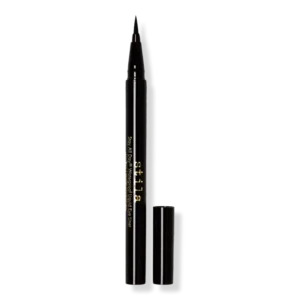
 Thrive Causemetics Liquid Lash Extensions Mascara – The tubes build on each other and make my nothing lashes so long! I love it!
Thrive Causemetics Liquid Lash Extensions Mascara – The tubes build on each other and make my nothing lashes so long! I love it!
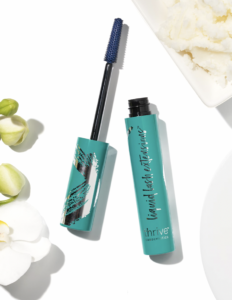
 NYX High Definition Finishing Powder – makes your face matte instantly!
NYX High Definition Finishing Powder – makes your face matte instantly!
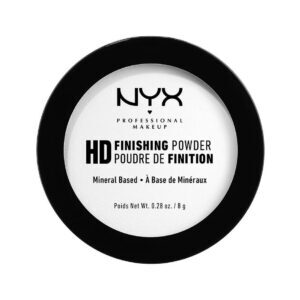
 Maybelline Dream Pure BB® Cream – so creamy, and just the right amount of coverage!
Maybelline Dream Pure BB® Cream – so creamy, and just the right amount of coverage!
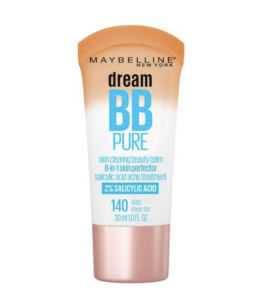
K that’s it. Any questions!?
Thanks, Kajabi and Inc Magazine for having me at SXSW! Thank you to Sam for making sure I get to everything on time.
Thank you to the local Austin BlogiFam who came out to see me speak and then spent the whole next day shooting ridiculous content with me! I can’t wait for you guys to see it!!

March 16, 2023
Our first glimpse of Summer ’23: The Coastal Cowgirl
Another day, another trend, amirite? The Coastal Cowgirl aesthetic comes hot of the press just in time really as Spring is sweeping in and Summer is on our minds.
It’s like if Clean Girl and Cottagecore had a baby on a farm. It gives laid back, effortless, but also cool without trying, you know?
@lexilunde And @paigelorenze is the blue print#coastalcowgirl #coastalcowboy #summer2023 #summer2023trends ♬ Texas Sun – Khruangbin & Leon Bridges
But listen, i really love this one. In fact, the whole team is kind of digging this vibe, our Creative Brand Director (and just overall incredible human), Brittney, is the first one who shared it and she may actually be the original Coastal Cowgirl. From being the first person to inspire me to get my cowboy boots, to her just being the queen of a casual denim look.
So let’s get down to it, what makes a Coastal Cowgirl…. the key elements:
Crisp whites and neutralsCowboy boots + hats (duh)Subtle floral details (like a crochet moment, yes please!)Denim, all the denim.Nothing too tight fitting, think airy + breezy
I think the part of the trend that fascinates me is that it plays on a tightrope of design balance. Go too far into the effortless and neutrals and you could end up looking like a potato sack that fell off the truck on I-80.
I think when (not if!) this becomes a mainstream style, I think this delicate balance will be what creates a barrier to participation.
Fitted, but comfortable.
The jeans, look like you could eat a hearty bowl of chilli (is that what cowboys eat?) and still have a little breathing room, and the shirts that have enough room for the wind to play with but still are flattering.
View this post on Instagram
A post shared by breezy | san diego photographer (@goldenbreezephotography)
Worn in, but not ragged.
Like the denim, the reclaimed wood, the soft wrinkles in the cowboy boots. It all feels very intentional and in a weird way, comforting? But never dirty or scraggly.
Effortless, but not lazy.
I think the face of the Cowgirl Aesthetic is like a blonde girl somewhere out on the prairie, wind in her hair, jeans, linen top with statement cowboy boots. It looks so breezy and effortless, but yet so cohesive.
View this post on Instagram
A post shared by c o a s t l c o w b a e (@coastlcowbae)
Detailed, but still subtle.
From a little crochet moment on your top to a frill on your sleeve or a bold pattern on your boots… There are little hints of detail in the sea of whites, denim and warm browns. The true coastal cowgirls know how to pair details without the chaos… give each detail it’s moment to shine.
Cowboy boots are the new statement piece.
The core of the aesthetic unsurprisingly is the boots. But, this is where the details come in, I feel like the cowboy boot is the new handbag. It’s a moment to show off a little flair, it’s an accessory where you can show the world a taste of flavor. Spice it up if you will.
come in, I feel like the cowboy boot is the new handbag. It’s a moment to show off a little flair, it’s an accessory where you can show the world a taste of flavor. Spice it up if you will.
Like excuse me Dolce Vita, okkk I see you. Look how cute these ones are?
@madelinebajczyk Its giving coastal cowgirlon my LTK!! RUN #coastalcowboy #coastalcowgirl #dolcevita #dolcevitashoes #dvpartner #dolcevitapartner #westernboots #coastalgranddaughter ♬ Her x Promiscuous – Hunny Bee
But really my favorite cowboy boots I think I’ve seen to date (don’t tell  ), is the ones wore to South By Southwest this weekend in Austin. I thought about not mentioning them because I dont even think Free People sells them anymore, but they deserved their moment in the spotlight.
), is the ones wore to South By Southwest this weekend in Austin. I thought about not mentioning them because I dont even think Free People sells them anymore, but they deserved their moment in the spotlight.

I mean… how cute! That’s what I’m talking about it’s that little flair of detail that just makes the outfit perfect.
From Fashion to Home
While fashion is definitely the heart of this trend, the same elements play into the home as well. From breezy open windows, to reclaimed wood furniture, soft tones and crisp linen sheets.
@havenlystudio Welcome to my little safe haven… #fyp #studio #apartmenttour #coastal #cowgirl #coastalcowgirl #thrifted ♬ Linger – The Cranberries
Is the Coastal Cowgirl aesthetic for everyone?
I’ll be honest, when I was looking at the beautiful feeds of the girls posting about it. I feel like it does have a “look,” I could see Coastal Cowgirl getting some of the backlash that the Clean Girl aesthetic had with the blonde, skinny, tall stereotype. I mean it’s hard for someone like me to pull off effortless baggy jeans when I have a 25″ inseam and a more curvy hip area.
But if the question is, can anyone be a Coastal Cowgirl?? The answer is: yes.
And maybe that’s the real reason I was so drawn to this trend. Sure, it’s a fashion trend, but more… it’s like a feeling of letting go, being a bit more carefree, letting your hair down (but like maybe half-down, and wear a cute straw cowboy hat). Where it differs from the Clean Girl is it allows you to get a little messier and more playful? It’s allowing us to stop and pick the non-metaphorical flowers on the side of the road. It gives me hope for a Summer ’23 that is more lighthearted, sunlit and dare I say.. joyful?
So go on, have fun with it… pull out that old denim, crochet top and linen shirts that you’ve held onto for a decade. And plus, what better excuse to buy yourself some cute cowboy boots?!

Balletcore: The Dance-Inspired Fashion Trend That’ll Have Your Style On Pointe
Everything you need to rock the balletcore trend.

Calling all dancing queens! This fashion trend is bringing your favorite dancewear pieces from the studio to the street.
Meet balletcore; one of the aesthetics taking over TikTok. We’re breaking it down and showing you exactly how you can make this style all your own.
Think athleisure, but with some flair

Balletcore includes all the things we love about ballet, from the comfy warm-up wardrobe of wrap sweaters and leg warmers to the delicate pastel tutus and leotards worn on stage. It’s all of the fun, girly things that make us feel like kids again; bows, silk, and lots of pink!
It’s a fun and playful way to dress up your gym clothes or make your work wardrobe a little more comfortable, and you know we love a fashion meets function moment!
This style takes everything you love about athleisure but gives it an elegant twist. It’s versatile, it’s chic, and it’s something that anyone can incorporate into their look.
@arminarshe a psa to wear fleece lined tights with your skirts during winter#coquette #balletcore #pilatesprincess #winteroutfits ♬ original sound – hannah
How did it start?
Before it was taking over TikTok with over 375 million views for #balletcore, ballerina-inspired style was inspiring couture designers all the way back in the 1930s, when Chanel was making her gorgeous tulle gowns. Then in the 1960s, the ballet flat became a closet must-have.
Now that we’re looking for clothes that are cute and comfy in the work-from-home world, and as many ways to wear athleisure outside of the gym as we can, it’s back and better than ever!
Ready to leap into this trend?
Here’s how to get the look.
Stick to the basics.
Build your wardrobe with bodysuits, sheer skirts, and classic ballet flats.


 It's all in the layers.
It's all in the layers.Layer with leg warmers, tights, and wrap tops to elevate your outfit.

 Comfort is key.
Comfort is key.Think soft knits, silky satins, and oh-so fluffy tulle mixed in with your favorite stretchy athleisure materials.
Head over to POPFLEX and check out the Pirouette Tiered Skort, a tutu-inspired piece that’ll have you feeling like a prima ballerina. You can read my own review on the skirt here.

 Embellish your outfit.
Embellish your outfit.Think bows, lace, and tulle accents. The key is creating the perfect balance between elegance and ease. Add some fun hair accessories like headbands or some delicate pearl jewelry to complete the look.




As much as we love this style, there are some things we want to leave behind.
In the past, ballet has been gatekept from certain communities. While we love dancer-inspired fashion, the industry has not been kind to people existing in larger bodies, nor has it often made space for dancers of color to shine.
While we celebrate this fashion trend, it’s important to create a space where everyone is welcome.
@porsharenaehall When I was younger I was a ballerina. I never got to pointe which I know is the most challenging. Now I love adoring the fashion style and taking Pilates Barre workouts is the closest to reliving the sport right now.*also the bag is actually my vintage ballerina bag when I was younger with my shoes and a couple pieces of wardrobe. (90s) Are you a current or former black ballerina? Would love to know your experience because it’s different for everyone! #vlogmas #pinkmas #blackballerina#ballerinaaesthetic#balletcore#balletstyle#balletfashion#blackballetcore#pinterestaesthetic#pintereststyle#ballerina#pinkaesthetic#blackprincess#princessaesthetic#blackfemininity#balletcoreaesthetic#balletcorefashion ♬ girlfriend – Hemlocke Springs
Ready to give the balletcore look a try?
Now that you’ve learned about balletcore, we can’t wait to see how you make this trend all your own! How do you feel about the aesthetic? Leave a comment below!

Try this if you WFH and can’t find time to work out!
Hey guys!
I am currently in this season of my life where I don’t have time to work out. I know. It’s terrible. I am trying to dig myself out from under a growing pile of new challenges. Challenges due to rapid business growth. So it’s not a bad thing at all (I’m happy to have these issues) it’s just A LOT all at once!
I am tired, but I know that once I’m out, and once the problems have been solved, POPFLEX and Blogilates will be much stronger.
View this post on Instagram
A post shared by Cassey Ho (@blogilates)
Anyway, until I am able to find time, right now some days my workouts are these walks during meetings. I go 2.5 mph and can get in 4-5 mi easily in a day without much effort! One day I did almost 12 mi. But TBH that was maybe too much because my thighs started getting sore the last few miles!

Anyway, for any of you trying to get in your steps in during the day if you WFH, try taking your meetings on a treadmill! The key is to not be too ambitious with the speed. For me, 2.5 mph is the right pace where I can still talk and think normally.
Remember…this is not a workout so don’t try to go all out and get sweaty – it’s just a thing you can do while working so you’re not sitting on your butt all day!

I Tried Glossier Deodorant for a Month. Will I Keep Using It?
It was only in recent years that I made the transition to aluminum-free deodorant. I’m not a scientist by any means, but as a beauty writer I’ve read a fair share of articles about how some popular deodorants use ingredients that have potentially been linked to cancer and other serious illnesses.
That’s a scary thought, especially as someone who not only works out alot (hello, sweat), but also is generally a sweaty person. And that’s when I decided to take matters into my own hands. I’ve been using Native and Tom’s natural deodorants for the last year, but I came across Glossier’s new deodorant on TikTok and well, I knew I had to try it.
I figured that if it’s anything like the brand’s matte lipstick and jelly cleanser, then it’s probably great so I decided to give it a go.

Image: Glossier
First, here’s an overview.
The vegan deodorant comes in a refillable container, has a coconut oil base, and is formulated with key ingredients like elderberry extract, magnesium hydroxide, and potato starch. Additionally, it’s available in four scents: Orange Blossom Neroli, Unscented, Glossier You, and Sandstone.
What does it feel like?Unlike some other deodorants, this one isn’t gel or too cream-like. It’s what I would describe as a blend between butter and moisturizer. It easily glides onto the skin and almost instantly disappears — yes, it doesn’t leave that unwanted white cast. My favorite part? It wasn’t sticky. The last thing I want is to have my armpits feel sticky as I’m lifting weights or doing anything really.
What does it smell like?The ‘unscented’ deodorant has no fragrance whatsoever. As someone who isn’t too keen on scents, I was pleasantly surprised because sometimes even ‘unscented’ can be scented, but this rang true in this case.
As for ‘Glossier You,’ I could definitely sense there was a fragrance, however, it wasn’t extremely pungent. I didn’t notice it every time I lifted my arms which was what I was worried about in the first place .
Does it work?To give you the best, real-life Glossier deodorant review, I wore it while I was outside at Disney World and during my workouts. That really put it to the test.
According to the directions, you’re supposed to swipe one to two times under each. As someone with a large armpit, I made four circle motions to make sure I covered the entire surface area. Additionally, I made sure my armpit wasn’t moist or damp prior to application so the results could be as accurate as possible.
After a full day out in the sun, my pits were surprisingly not too smelly. There was a bit of B.O. starting to come through, but I only noticed it if I really tried (i.e. stuck my nose directly in my armpit).
As for my workout, I couldn’t believe it.Usually my armpits are not only smelly and gross after a workout, but extremely wet and damp. However, this was not the case after using this deodorant. They were a bit moist, but considering I just worked out for an hour it was nearly nothing.
As for reapplication, I applied the deodorant twice throughout the day when I was out at Disney World just for some extra coverage. Could I have gone without? Probably. Was I willing to take that chance? Nope. Not if I was going to be standing in tight spaces next to strangers all day.
Not just for pitsI’ll even say as someone who deals with inner-thigh chafing, I usually put deodorant in between my thighs to prevent unwanted sweating and moisture. This was the perfect deodorant for that because it’s so smooth and not-sticky. Unlike baby powder which can get everywhere, this deodorant glides on and creates a barrier between the skin to prevent unwanted friction and chafing whether that’s during exercise or out and about.
It’s worth noting that I’ve been using aluminum-free deodorant for a while so it’s safe to say my body is acclimated to it. However, if this is your first go-around at using aluminum-free deodorant, then the brand says you should give yourself four weeks for your body to get used to it.
@glossier Introducing Glossier Deodorant, launching TOMORROW 1/17. Available in Glossier You, Orange Blossom Neroli, *new* Sandstone, and Unscented. Aluminum free. Refillable, reusable, and recyclable! Check this space for more details to come #glossier #deodorant ♬ original sound – Glossier
Packaging
My biggest “complaint” with the Glossier deodorant was the packaging. It took me nearly 30 minutes to pop off the plastic top when I opened it. I even had to Google if other people had a problem because it just would not budge — I even had other people try because I just was not getting it off myself. Eventually I used enough force where it popped off, but I was genuinely concerned I’d have to return it.
The reusable packaging is a winner in my book because I’m all about taking care of Mother Nature and if it means keeping the same vial that’s great. And it’s super chic; it doesn’t appear to be made out of cheap plastic like some other brands.
PriceCompared to my current Native deodorant which retails for $12.99, the Glossier deodorant costs $22. That’s nearly a $10 difference for a product that works similarly to the other. I’d say in this case you’re paying for the name brand and packaging which are high end and quality, so you get what you pay for but you’ll pay a lot.

Image: Glossier
Glossier deodorant review: Worth it?If you’re looking to get into aluminum-free deodorants or try a different one from the current brand you’re using, then Glossier’s is a great place to start. From the scent options to the reusable packaging, it checks off all of the boxes when it comes to finding a solid deodorant (at least for me.)
Although it is a bit pricey, I don’t think it’s a bad idea to buy yourself a tube and see how you like it. I wouldn’t go and purchase all of the scents at once (some of them keep selling out anyways), but try out one or two to get a feel for it and then go from there.
I’ve had the deodorant for over a month now and I haven’t used anything else to keep my pits smelling nice and clean.
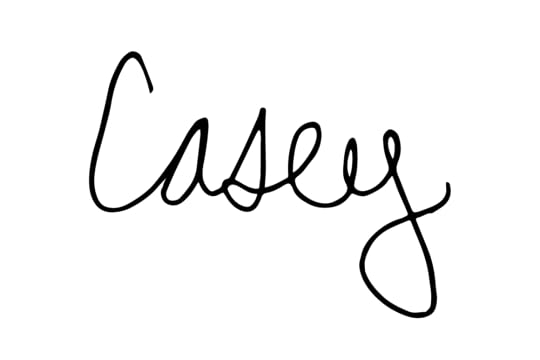
This Glossier aluminum-free deodorant review contains referral links to products we recommend and enjoy. We earn a small commission from thinks links, at no additional cost to you.
March 14, 2023
“Don’t you guys get sick of each other?”
Don’t you guys get sick of each other?”
This is a question a lot of couples trying to work together ask us. And I get it – we live together, we work together, we literally DO EVERYTHING together, so it’s a fair question.
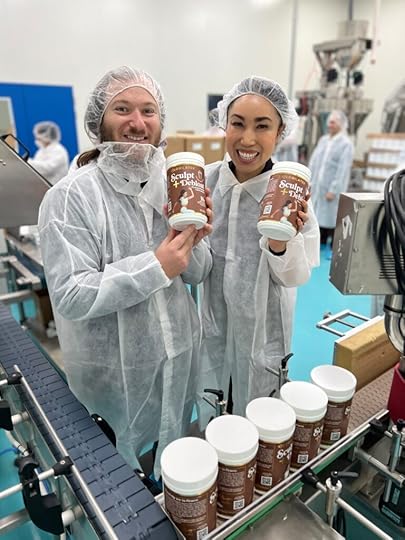
Sam and I have been together for 14.5 years and yes, like any other couple, we debate, we question each other, and we get on each other’s cases hard, but what we’re really good at is knowing when it’s time to stop. These “fights” usually end with one of us looking at the other, holding back a smile while trying to act tough, and saying “k we good?” And then the other will go “k, over.”
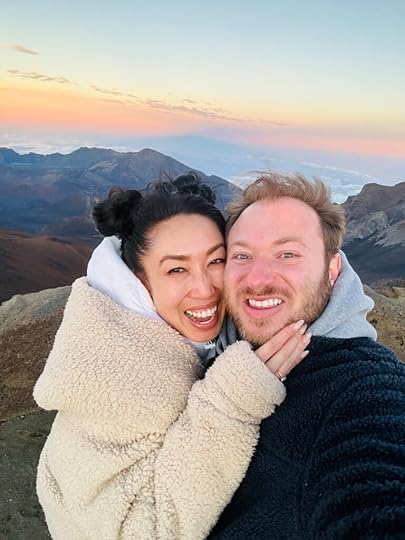
In complete transparency, these “fights” are usually work related (not really personal stuff) and only happen because we’re experiencing emotional distress around a new difficulty with the business. But, these fights never last long (5-10 min) because Sam and I know and respect one another’s realm of expertise. Once we let ego and emotion subside, we’re all solutions based – like it doesn’t matter who is right or wrong , it only matters how we can solve the problem.
This won’t be easy or natural for everyone bc different humans process emotions differently, but this is what works for us and has kept our husband and wife relationship AND our business relationship strong (and exciting) all these years.
Now…in the case of this video…
View this post on Instagram
A post shared by Cassey Ho (@blogilates)
The truck going missing thing had just happened that morning so we were both NOT in a good mood. But then, I had an idea, I wanted to film it, and bc Sam knows how important it is for me process my feelings through content creation (writing, editing etc) he agreed to the video idea (albeit begrudgingly but still).
These are some of the special outtakes from the 8 minute “dance rehearsal” that made me laugh so hard I literally cried while gasping for air. You can tell how much he just looooooooooooves dancing, can’t you??

Oh ya, so the answer to that question? No. No we don’t get sick of each other bc we’re never bored of each other!
Thank you Sam for allowing me to share this with you guys. I had to negotiate for 2 days so you better like it.
Enjoy!!
PS: no update on the missing bags yet
Is Breathwork the New Meditation?
We’ve all had those moments or seasons where we’ve been intensely stressed, needed a break, or just wanted to try something new to gain clarity on a situation. When life gets difficult, many of us turn to meditation. But what if meditation doesn’t cut it? Or you simply can’t reach that state of transcendence? Then perhaps it’s time to consider breathwork.

You might have seen breathwork named the “latest wellness craze.” Some people even refer to it as “meditation on steroids.” Buzzwords aside, it’s a truly unique practice that can be life-changing.
Best of all, it’s accessible, doesn’t have to cost anything and most people can learn how to do it.
What is breathwork?It’s a practice of mindful, controlled breath.
Breathwork practitioner and owner of Five Sense Collective, Kirscha Cramer defines it as “A practice that employs the conscious use of the breath. An innate ability we all have, with an unconscious intelligence that allows us to self-regulate to improve physical, emotional, and mental wellbeing.”
What can it do for you?According to breathwork practitioner Ali Levine, there are many benefits of breathwork. “On a basic level, breathwork allows you to find peace, calm, lower your stress, restore your nervous system to a parasympathetic system, rest and digest vs. a fight or flight reaction. It can also help your immune system over time, and your overall health.”
Levine began to explore breathwork after a difficult period in her life and discovered it had an incredibly profound impact. “I became a certified practitioner after going through my own spiritual awakening back between 2019 to 2020. Breathwork was a soul transformation,” she tells me. “I became a daily meditator after meditation saved me when I was going through postpartum depression. After some time, mindset work by itself wasn’t working for me anymore. That’s when I found breathwork, or I would say the breath found me. Once I accessed this wisdom, it became the place I came back to every time and it felt like home. The breath has continued to show up for me in many ways and help me move from breakdowns to breakthroughs and access the highest frequency and consciousness of myself in all situations of my life.”
Even if you aren’t going through a challenging time, Levine tells me breathwork has many benefits including:Reduced stress and anxietyLower blood pressureBetter sleepImproved moodA boosted immune system
The basics of breathworkView this post on Instagram
A post shared by A L I L E V I N E (@alilevinedesign)
Much like meditation, you can begin your breathwork practice at any time. The key is to simply commit to it as part of your self-care routine.
Cramer tells me, “Breathwork can be practiced regularly by setting aside a specific time each day to focus on the breath, such as in the morning or before bed, and incorporating different breathing techniques. You can learn these techniques from your own research or from an expert instructor, such as our Academy breathwork teacher Bryant Wood. As with all new practices, consistency and accountability will be helpful.”
Give this a try – “A very simple breathwork exercise a beginner can do, is breathe in (inhale) for four and exhale out for eight and repeat three times. If that feels good in the body, then do it five to ten times,” says Levine.
Cramer also suggests “box breathing,” which is sometimes known as square breathing. “This technique helps to slow down the breath and can be done anywhere, at any time, and can be a good starting point for those new to breathwork.”
Here’s how to do it:
Breathe in for a count of fourHold the breath for a count of fourExhale for a count of fourRepeatEven better, box breathing requires no prior experience and is even easy for beginners to do. “The technique allows for flexibility and can be adjusted to suit the individual’s needs and comfort level, for example, by starting with a count of two and then increasing to a count of four as the individual becomes more comfortable with the technique,” she says.
View this post on Instagram
A post shared by SAMANTHA
breathwork mentor (@samanthaskelly)
What to expect during breathwork
Levine tells me that during a breathwork session, as conscious breathing increases, the airways of our lungs open more expansively. “That allows more oxygen in the body which then changes the alertness of our brain. What happens next is our parasympathetic nervous system counteracts this, and brings our body back to a homeostasis state. When we continue this for more than a few minutes, our brain tells our body we are safe and we are able to go deeper with our breath and nervous system.”
While everyone has their own unique experience with breathwork, I’ve tried it several times. Overall, my sessions (especially one I had with Levine) have been profound with my entire body tingling, seeing visions, crying, and being in and out of consciousness. There’s something very psychedelic about a really deep breathwork session.
But keep in mind…Breathwork can have physical risks. So if you’re not taking instruction from an expert or teacher— it is important to listen to your body and not push too hard. “If you feel lightheaded or uncomfortable during a breathing session—it’s best to work within your limits,” says Cramer.
And as always, check in with your healthcare provider before beginning a new wellness practice.
Where should you start?
If you’re interested in breathwork but want to experience it for yourself before working with a practitioner or going to a class, there are always resources online.
While Levine holds online workshops as well as private remote sessions, there are plenty of free resources on YouTube. Wim Hof, who is one of the most renowned figures in the breathwork industry has several free YouTube videos available. You may also want to check out Samantha Skelly’s YouTube channel. She trained Levine and has lots of videos devoted to the practice.
Have you ever tried breathwork? What was your experience like? Tell us about it in the comments!
Cassey Ho's Blog
- Cassey Ho's profile
- 49 followers


